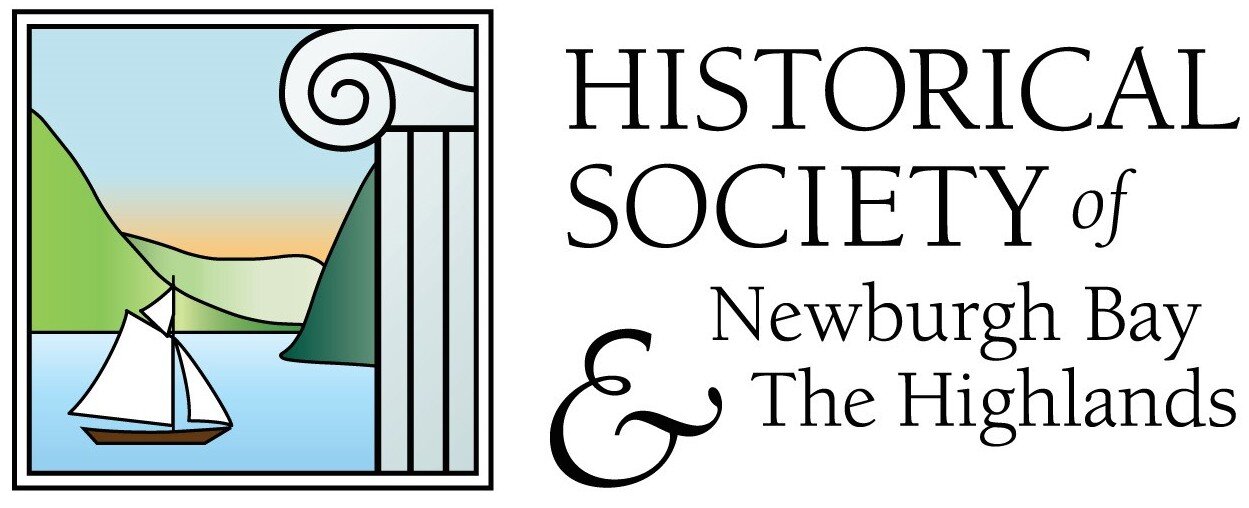A Giant Step Never Taken
Approaching Newburgh from the Hudson River today is a very pleasant experience. Take a ride on the ferry back and forth to Beacon and see how nice we look – a hilly little city rising gently away from the shore. Step off the ferry and look around at a quiet place where only restaurants and parking lots dominate mixed with a couple of other enterprises like a fine independent cinema, an architectural firm and a hair salon.
What a difference could be seen if we could travel back a century and see the busy port of Newburgh. There was no empty parcel of land anywhere and the city’s waterfront lots were in a constant flux as the needs of commerce changed. Wharves and warehouses were busy dawn to dark. Ships and barges of every type cued up for access to docks. Newburgh and Orange County’s productivity funneled goods to the shore where water and rail transit sped materials off to markets around the state and the world.
Warehouse & wharf of Homer Ramsdell & Co. in 1890
The illustrations here show an example of how goods were stored and how they were shipped. The big, white frame warehouse right on the shore belonged to the foremost freight company in the area, The Homer Ramsdell Transportation Company. In and around that river bulkhead can be seen bales and crates and barrels of farm goods ready to be packed aboard steamers like the one tied up at the shore. Four blocks south, the shoreline gave way to large rail yards of the Erie Railroad, another enterprise in which Homer Ramsdell was heavily invested. Trains, wagons and boats all converged there to transfer shipments heading for various markets from New York to Chicago and many spurs in between.The volume of freight moved from the Port of Newburgh at the turn of the last century prompted Homer Ramsdell to plan a larger facility. Right at the shore of his rail yards, at the foot of Washington Street, Mr. Ramsdell proposed building a new three-story warehouse plus a huge eight-story grain elevator. When he developed this vision in 1890, he was over 80 years of age and conceded that it would have to be the next generation that carried out his plan if they agreed.
Proposed storehouse & grain elevator for Homer Ramsdell & Co. 1890
The plan may have been too ambitious. It certainly required significant changes in what we now call infrastructure redevelopment. Goods still came into Newburgh by wagon from surrounding farms. The Washington Street shorefront rises sharply uphill from Water Street, as we know even today. Ramsdell’s original warehouse and dock was approached from Colden Street, a cut in Newburgh’s hillside that was originally called Wagon Street because it made the climb possible for teams of horses. A new facility, as convenient as it might have seemed to the center of the rail yards and all that transfer potential, was also in a place where there was no elevated trestle. Getting to the shore would require a tunnel under the Erie Railroad’s many lines. Mr. Ramsdell and his planners envisioned a tunnel that would take up part of Washington Street’s right-of-way. Then they would shunt regular traffic to a pair of short streets wrapping around the tunnel: Little Ann Street (which some of us old-timers recall) and a diagonal lane linking Little Ann to Washington. The tunnel itself would run southeast under the tracks and exit onto a new section of Front Street to be created in the western side of the shipyards.
Erie Railroad yards between Washington & First Streets
Might it have worked? A coal yards supplying all the engines that refueled as they came through Newburgh lay just west of the big grain elevator. Could that have coexisted with fresh food? Boxcars appear in the design drawings, showing that train ferries would have pulled in to hook up rolling freight cars as they did down near the New Windsor border where they carried coal from the massive Pennsylvania Coal Yards under Washington Heights. No doubt it was an ambitious concept to enlarge Newburgh’s port capacity. It never came to be as the century turned, perhaps a victim of changing markets, public criticism or, more likely, a victim of the great national fiscal crisis, the Panic of 1893. The big neighboring Wright Engine Works shown across Water Street in Mr. Ramsdell’s design drawing certainly fell victim to that Panic.One thing is certain. The birds-eye view that flatters the concept drawing would not have been the way Newburghers or visitors would actually have seen their waterfront after such a monolith rose on our horizon.



